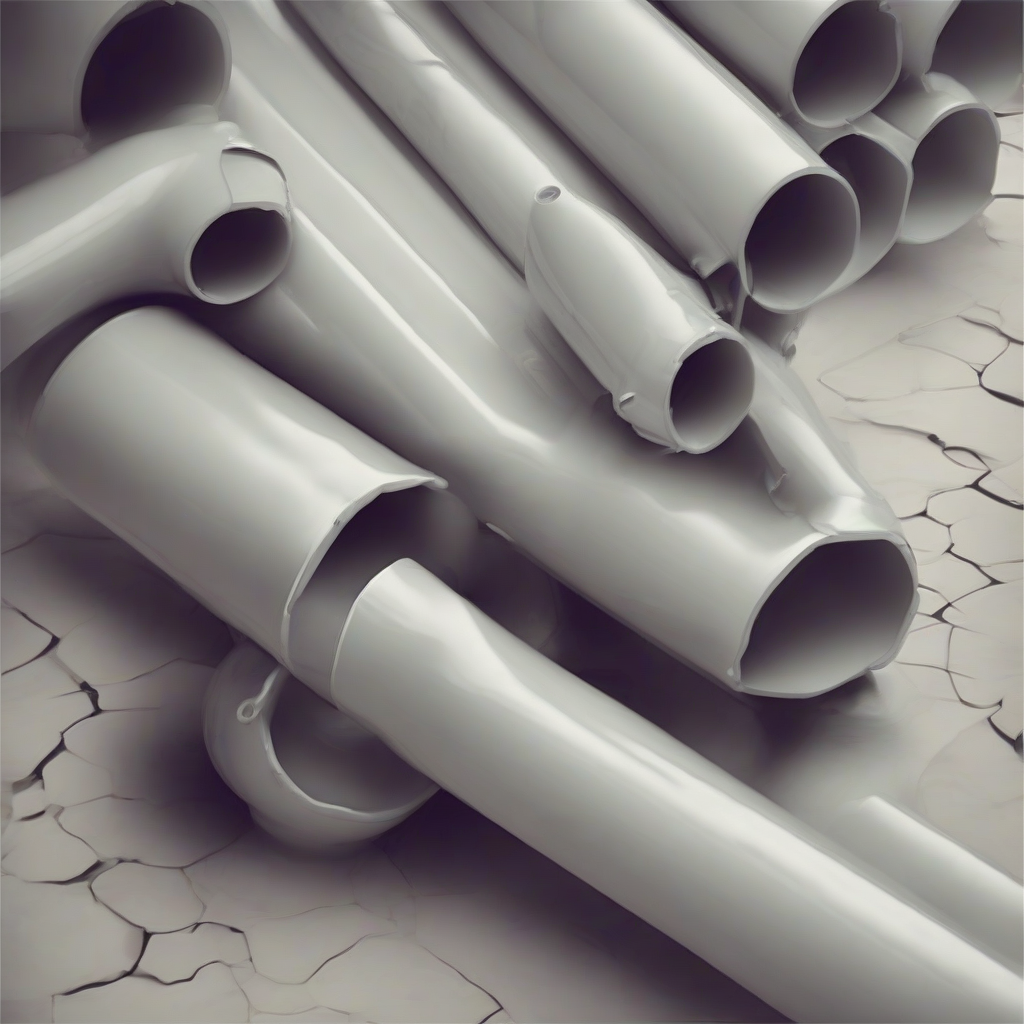The Ultimate Guide to Repairing Broken PVC Pipes: A Comprehensive How-To
Broken PVC pipes are a common household problem, but with the right knowledge and tools, you can often repair them yourself, saving time and money. This guide will walk you through various repair methods, from minor cracks to significant breaks, equipping you to handle most PVC pipe repair situations.
Assessing the Damage
Before attempting any repair, it’s crucial to thoroughly assess the extent of the damage. This will determine the appropriate repair method. Consider these factors:
- Location of the break: Is it easily accessible? Does it involve a joint or a section of pipe?
- Size and type of break: Is it a small crack, a large fissure, or a complete break? Is it a clean break or a shattered section?
- Water pressure: Is the pipe under pressure? If so, turn off the water supply immediately before proceeding.
- Pipe diameter: The diameter of the pipe will influence the type of repair fitting or clamp you’ll need.
Safety Precautions
Working with PVC pipes, especially those carrying water under pressure, requires careful attention to safety. Always:
- Turn off the water supply to the affected pipe section before starting any repairs. This is paramount to avoid flooding and potential injury.
- Wear appropriate safety gear, including safety glasses and work gloves. Debris from broken pipes can cause eye injuries, and sharp edges can cut your hands.
- Use caution when working with sharp tools like knives or saws.
- Ensure proper ventilation in the work area, particularly if using solvents or adhesives.
- If you are uncomfortable performing the repair yourself, consult a qualified plumber.
Repair Methods for Minor Cracks
For small cracks or hairline fractures, several simple repair methods are effective:
PVC Pipe Repair Tape
PVC repair tape is a self-fusing tape that creates a strong, watertight seal. It’s ideal for small cracks and minor leaks. Simply wrap the tape tightly around the crack, ensuring complete coverage.
- Clean the area around the crack thoroughly before applying the tape.
- Overlap the tape slightly with each wrap for maximum strength.
- Allow the tape to cure according to the manufacturer’s instructions.
Epoxy Putty
Epoxy putty is a two-part compound that hardens into a strong, durable repair. It’s excellent for filling small cracks and holes.
- Mix the two parts of the epoxy according to the manufacturer’s instructions.
- Apply the putty to the crack, ensuring it fills the void completely.
- Allow the putty to cure completely before turning the water back on.
Repair Methods for Significant Breaks
For larger breaks or complete separations, more substantial repair methods are necessary:
PVC Couplings
PVC couplings are used to join two sections of pipe together. This method is suitable for breaks that occur between pipe sections.
- Cut the broken pipe ends cleanly and squarely using a PVC pipe cutter.
- Apply PVC primer and cement to the ends of the pipes and the inside of the coupling.
- Carefully insert the pipe ends into the coupling, ensuring a snug fit.
- Hold the joint securely until the cement sets.
PVC Repair Clamps
Repair clamps offer a quick and effective solution for breaks in the middle of a pipe section. They come in various sizes to accommodate different pipe diameters.
- Clean the pipe surface around the break.
- Position the repair clamp around the break, ensuring proper alignment.
- Tighten the clamp securely to create a watertight seal.
Solvent Weld Repair
Solvent welding is a more advanced method that provides a permanent, strong joint. This is generally best for experienced DIYers.
- Clean the pipe ends thoroughly.
- Apply PVC primer to the pipe ends.
- Apply PVC cement to the pipe ends and the fitting.
- Quickly and firmly join the pipe ends, twisting slightly to ensure even cement distribution.
- Hold the joint until the cement sets.
Repairing Underground PVC Pipes
Repairing underground PVC pipes is more challenging and often requires excavation. If the break is significant, it’s usually best to replace the damaged section of pipe.
- Locate the exact position of the break using a pipe locator or by tracing the pipe line.
- Carefully excavate the area around the break, ensuring sufficient access to the pipe.
- Use the appropriate repair method (coupling, saddle repair, or complete replacement) based on the severity of the damage.
- Backfill the excavation area, compacting the soil to prevent future settling.
Troubleshooting Common Problems
Even with careful attention to detail, you may encounter some issues during the repair process:
- Leaks after repair: This could indicate inadequate cleaning, improper application of cement, or an incorrect fitting size. Recheck your work and ensure a tight seal.
- Difficulty fitting pipes into couplings: Ensure the pipe ends are clean, square, and free of debris. Use a lubricant if necessary.
- Cement not setting properly: This could be due to improper mixing or incorrect temperature conditions. Follow the manufacturer’s instructions carefully.
When to Call a Plumber
While many PVC pipe repairs can be handled by homeowners, there are situations where professional help is necessary:
- Extensive damage to the pipe requiring significant excavation or replacement.
- Lack of experience or comfort with the necessary repair techniques.
- Leaks that persist after attempting DIY repairs.
- Damage to the pipe is located in a difficult-to-access area.
- The broken pipe is part of a complex plumbing system.
By following this comprehensive guide and taking the necessary safety precautions, you can confidently tackle most PVC pipe repair projects. Remember, however, that safety should always be your top priority. If you are unsure about any aspect of the repair, don’t hesitate to consult a professional plumber.

